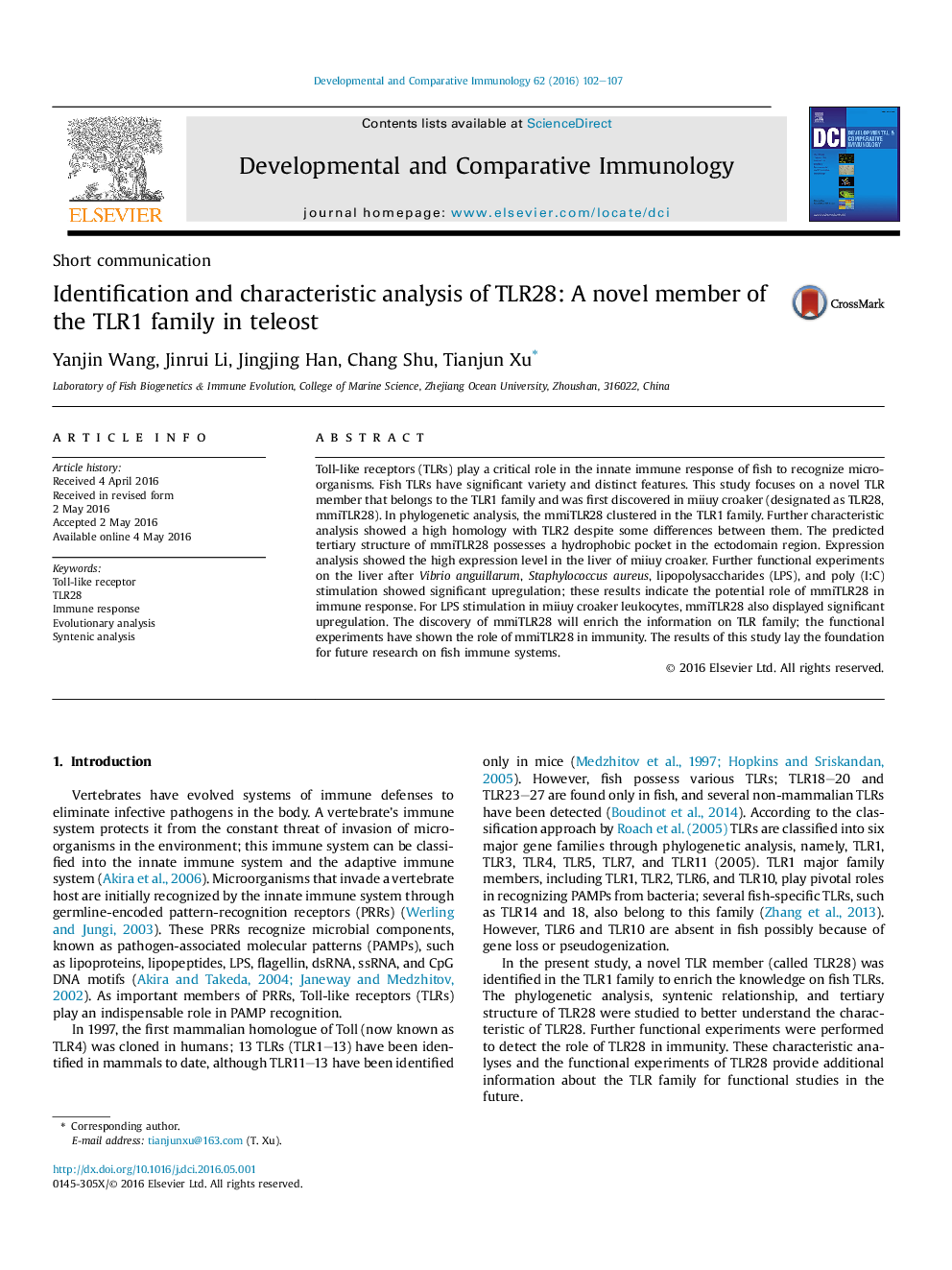| Article ID | Journal | Published Year | Pages | File Type |
|---|---|---|---|---|
| 2428788 | Developmental & Comparative Immunology | 2016 | 6 Pages |
•A novel TLR belongs to TLR1 family was firstly discovered in miiuy croaker.•MmiTLR28 shows high homology with TLR2, but differences do exist between them.•The formation of hydrophobic pocket may be responsible for the ligand recognition.•MmiTLR28 showed significant upregulation after pathogen stimulation.
Toll-like receptors (TLRs) play a critical role in the innate immune response of fish to recognize microorganisms. Fish TLRs have significant variety and distinct features. This study focuses on a novel TLR member that belongs to the TLR1 family and was first discovered in miiuy croaker (designated as TLR28, mmiTLR28). In phylogenetic analysis, the mmiTLR28 clustered in the TLR1 family. Further characteristic analysis showed a high homology with TLR2 despite some differences between them. The predicted tertiary structure of mmiTLR28 possesses a hydrophobic pocket in the ectodomain region. Expression analysis showed the high expression level in the liver of miiuy croaker. Further functional experiments on the liver after Vibrio anguillarum, Staphylococcus aureus, lipopolysaccharides (LPS), and poly (I:C) stimulation showed significant upregulation; these results indicate the potential role of mmiTLR28 in immune response. For LPS stimulation in miiuy croaker leukocytes, mmiTLR28 also displayed significant upregulation. The discovery of mmiTLR28 will enrich the information on TLR family; the functional experiments have shown the role of mmiTLR28 in immunity. The results of this study lay the foundation for future research on fish immune systems.
